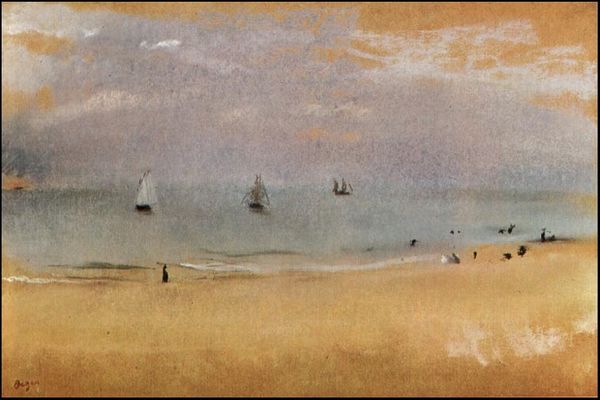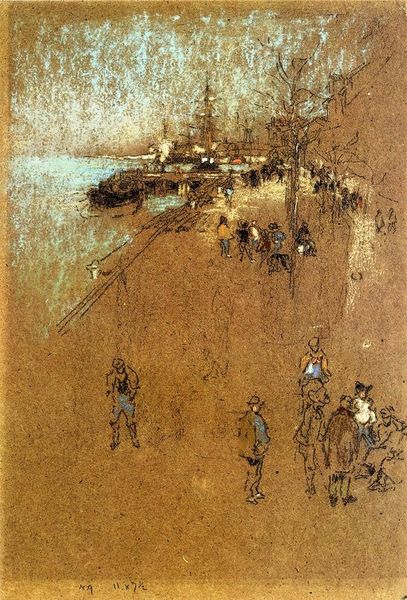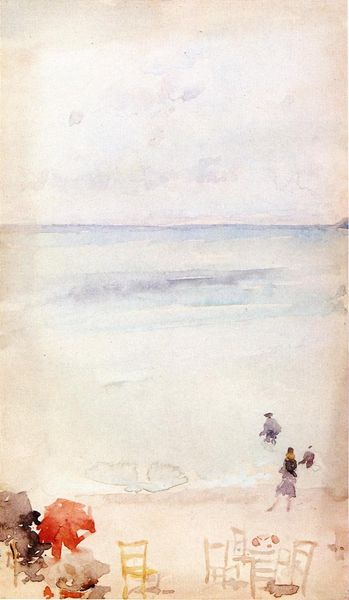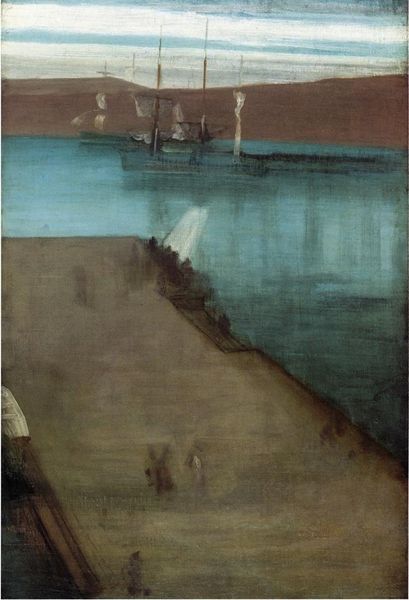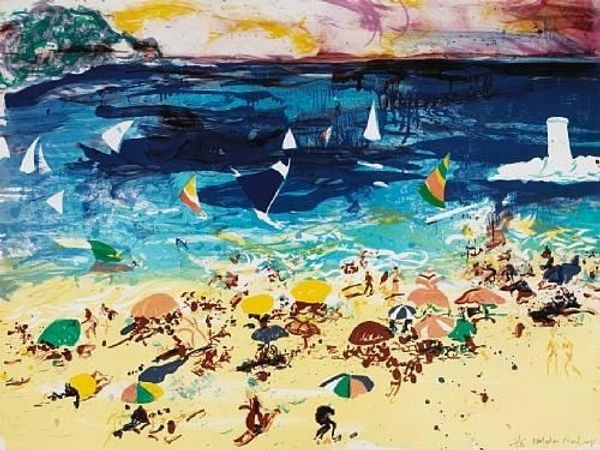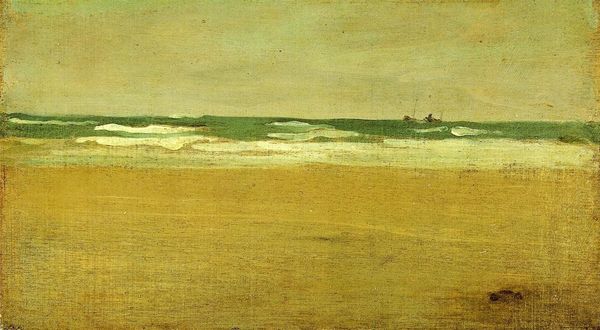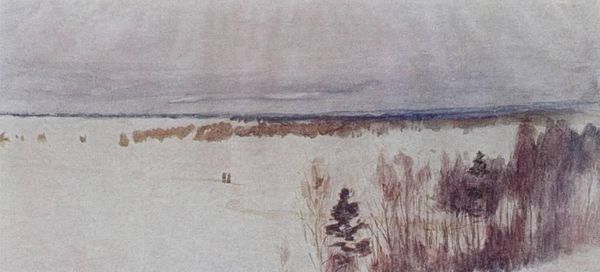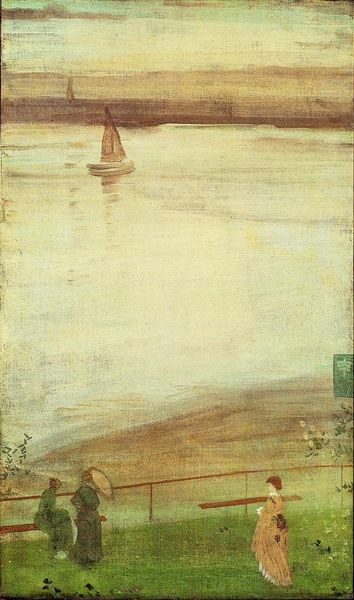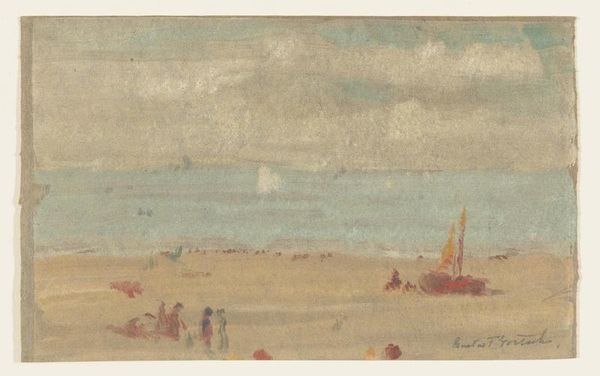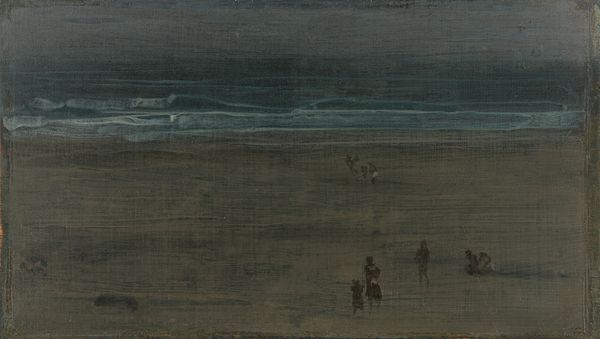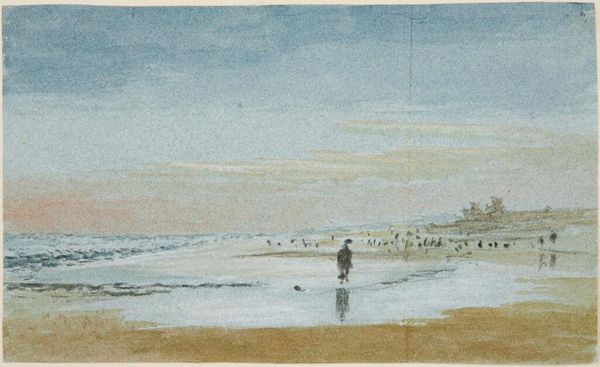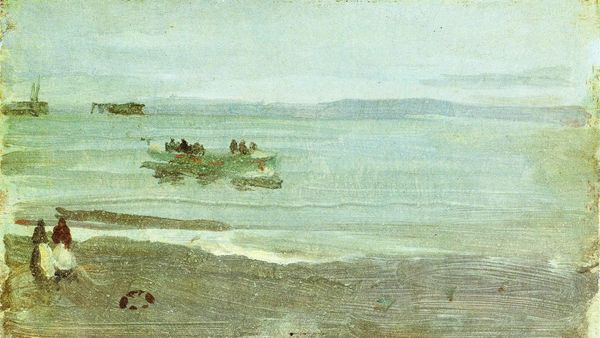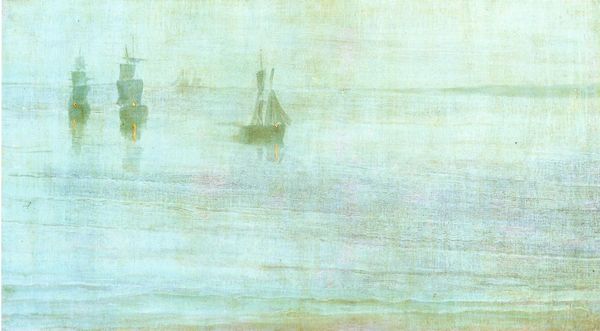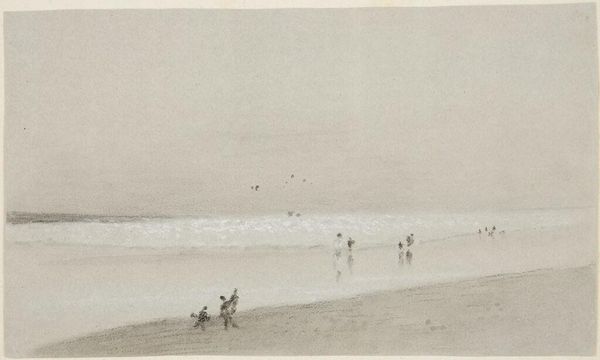
painting, plein-air, oil-paint
#
boat
#
ship
#
painting
#
impressionism
#
plein-air
#
oil-paint
#
landscape
#
possibly oil pastel
#
ocean
#
cityscape
#
sea
Dimensions: 22.86 x 13.97 cm
Copyright: Public domain
James McNeill Whistler created this oil-on-wood panel, titled "Harmony in Blue and Pearl: The Sands, Dieppe" towards the end of the nineteenth century. The painting exemplifies Whistler’s aestheticism, emphasizing visual sensation over narrative. Made during a period of increasing industrialization in both Europe and America, Whistler turned away from art that attempted to portray realistic or moral subjects, and instead looked to the natural world. "Harmony in Blue and Pearl" can be interpreted as a symbol of escape from the mundane, offering a tranquil scene of leisure at the beach. Whistler took great interest in Japanese art during this period, where he found inspiration in the emphasis on simplicity, elegance, and naturalism. As an art historian, I’m interested in the ways that Whistler’s painting reflects the cultural and economic shifts of the time. Further research into his influences, as well as primary sources from the period, provide deeper insights into the meaning and context of his work.
Comments
No comments
Be the first to comment and join the conversation on the ultimate creative platform.
